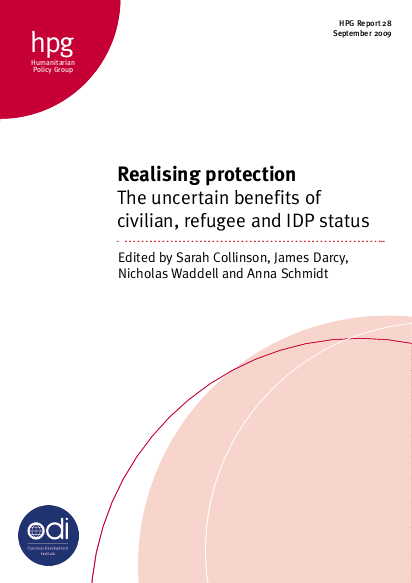
Protecting civilians from the worst effects of violent conflict,
human rights abuses and persecution lies at the heart of the
humanitarian agenda. Central to this endeavour is the attempt
to secure respect for the protected status conferred on
civilians and displaced people by international law and
custom. The laws and norms that define protected status
make demands on a range of duty-bearers – armed actors,
state authorities and others – to observe rules of behaviour
towards those with such status. Yet while this normative
aspect of protection is fundamental, the protection afforded
by legal and other rules remains notional unless acted upon. It
is the ‘real-world’ significance of these rules that is the focus
of this report. It considers the meaning and implications of
three categories of protected status for non-combatants –
‘civilian’, ‘refugee’ and ‘internally displaced’ – and the
changing forms of protection associated with them, in theory
and in practice.